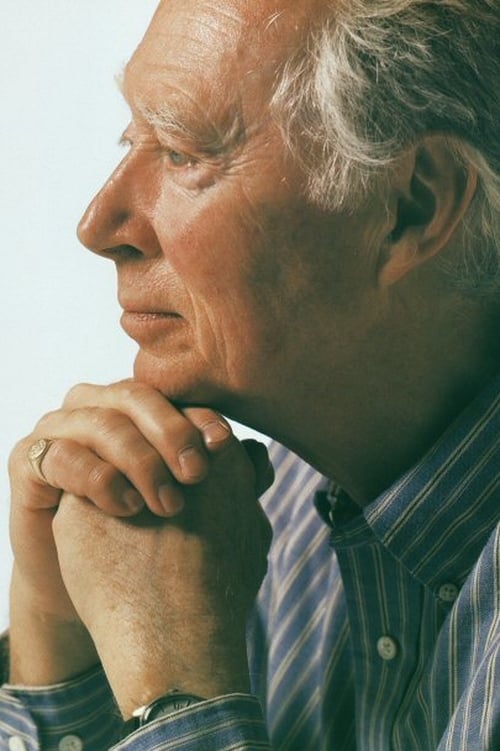
Michael Snow
Nascimento : 1929-12-10, Toronto, Canada
Morte : 2023-01-05
História
Michael Snow was considered one of Canada's most important artists, and one of the world's leading experimental filmmakers. His wide-ranging and multidisciplinary oeuvre explored the possibilities inherent in different mediums and genres, and encompassed film and video, painting, sculpture, photography, writing, and music. Snow's practice comprised a thorough investigation into the nature of perception.
While Snow early established himself as a successful painter and musician in his native Toronto, it was his 1962 move to New York City that marked the beginning of his rise to international prominence. He entered into a long-lasting and fruitful dialogue with downtown Manhattan's artistic avant garde, exchanging ideas with figures such as Yvonne Rainer, Philip Glass, Sol LeWitt, and Richard Foreman, and developing of some of his most ambitious and influential works to date. His 1964 film New York Eye and Ear Control documents his growing involvement with the burgeoning free jazz movement, and the soundtrack boasts a lineup that includes Albert Ayler, Don Cherry, and Sonny Murray. Snow would continue to pursue improvised music, both on his own and in ensembles such as Toronto's CCMC. The generation and reception of sound in the broader sense emerged as one of his main concerns, reflected in performance and tape works that share qualities with contemporaneous experiments by composers like Steve Reich.
At the same time, Snow made alliances within the underground film scene centered around Jonas Mekas' Filmmakers' Cinematheque, an experience that encouraged him to find ways to transfer his concerns with music and photography into the realm of the moving image. He assisted Hollis Frampton on films such as Nostalgia(1971), and it was legendary director Ken Jacobs whose loan of equipment helped Snow create his most famous and influential work, the groundbreaking 1967 film Wavelength. Wavelength, which notoriously includes a 45-minute camera zoom within a fixed frame, remains one of the most studied and admired works of structuralist filmmaking. Other of Snow's films of this period, including Back and Forth (1969) and La Région Centrale (1971) similarly explored the mechanics of filmmaking to simultaneously investigate the functional processes of cinema and of thinking itself.
In the 1970s and 1980s, Snow, responding to a growing institutional commitment to his work, experimented more with large-scale installations, including public sculptures such as Flightstop (1979) and The Audience (1988-89). In recent years, he focused on the specific nature and potential of digital media, yielding works like the video-film *Corpus Callosum (2002). Regardless of artistic genre, Snow consistently engaged in an analytical discourse on the nature of consciousness and experience, language and temporality. He died on January 5th, 2023.

Director
Cityscape elaborates on the methods Snow used in the making of his ground-breaking 360-degree film La Région Centrale (1971). Taking the advice of his long-time friend, Graeme Ferguson, to produce it as an Imax film, Snow orchestrates new patterns of movement that exchanges the focus on landscape in La Région Centrale with the cityscape of Toronto.

Director
A new performance that reworks the 1967 film’s sine wave soundtrack into a new composition distributed across multiple channels of sound in real time.

Himself
A serendipitous encounter with a younger artist gives legendary Canadian art icon Michael Snow the opportunity to reflect on his life and career.

Himself - Composer
World renowned artist and filmmaker Michael Snow continues to push the boundaries of yet another field, music. The avant-garde greats mastery of free-improvisation shines through in this rare solo piano performance at Konzerthaus, Vienna.

Narrator
This performance piece by filmmaker Hollis Frampton, recorded in 1968 in New York City, features the voice of artist Michael Snow. Frampton would place a tape deck at the front of a room, press play, and walk to the back to run a 16mm projector. Presented here is the audio portion of the piece, recreated with images designed to replicate Frampton’s visuals.

Himself
Experimental filmmaker Pip Chodorov traces the course of experimental film in America, taking the very personal point of view of someone who grew up as part of the experimental film community.

Director
Puccini Conservato uses a CD, a sound recording of some Puccini music (from La Bohème). The source of the sound (the loudspeakers) in a continuous hand-held panning (guided by the music), is intercut with shots of flowers or wood-fire, exemplifying the lyricism in Puccini’s music. By being a recording of a recording, the work proclaims the artificiality of the sound. However the beauty and humanity of the music comes through too.

Director
Using concert footage of the free-improvisation ensemble he co-founded in 1974, Snow digitally weaves together images and sounds from performances that have taken place across the globe. 'I desired an equivalence of seeing and hearing so that one could actually listen, pay attention to the music, as well as follow the picture development,' writes Snow. Only the music remains unedited, unmodified.

Writer
Playing painterly form with and against story-telling form, this Short Story is a loop that depicts a loop and is itself looped.

Director
Playing painterly form with and against story-telling form, this Short Story is a loop that depicts a loop and is itself looped.

Director
A dual-projection film where each director made 30 minutes of film without knowledge of what the other was making. Snow's side is a visual encyclopedia of natural and man-made objects. Brown's side transforms footage of a San Francisco cable car.

Director
In 2003, Snow released WVLNT (or Wavelength For Those Who Don't Have the Time), a shorter (1/3 of the original time) and significantly altered version of the original Wavelength (1967) by overlaying the original film upon itself.
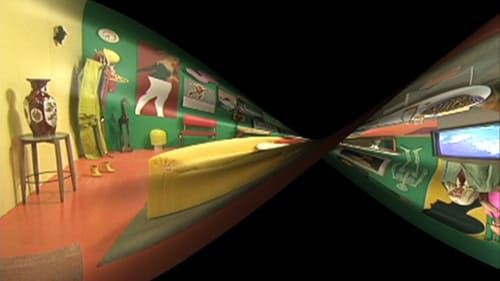
Production Design
A surreal and comic exploration of an office space and the decorations of a living room.

Writer
A surreal and comic exploration of an office space and the decorations of a living room.

Director
A surreal and comic exploration of an office space and the decorations of a living room.

Director
Solar Breath (2002) is a 62-minute loop of fluttering curtains that reveal and conceal an idyllic landscape in rural Newfoundland.
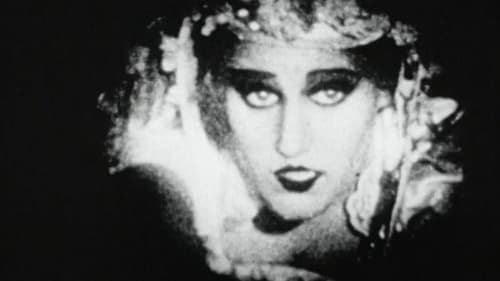
Director
Commissioned by the Toronto International Film Festival to mark the event's 25th anniversary in September 2000, the "Preludes" program consisted of ten short films by Canadian directors which were inspired in some way by the festival. Each film screened as a prelude to a feature film in the 2000 Toronto International Film Festival program. The full "Preludes" anthology was screened on the web in November 2000, and was given theatrical retrospectives at the TIFF Lightbox in the subsequent years.

Director
Panning shot of a room while a group of people discusses film while eating at a table.

Director
Zooming back from an image in close-up a brightly colored and kitschy room is revealed. Digitally manipulated objects and figures appear/disappear, details and colors change in scale, and intensity, sexes change. The Living Room digitally dramatizes and multiplies chosen manifestations and implications of On/Off and/or Absence/Presence. The Living Room is also part of the longer feature Corpus Collosum.

Self
Filmmaker Jonas Mekas films 160 underground film people over four decades.

Himself
MICHAEL SNOW UP CLOSE was produced on the occasion of The Michael Snow Project, a major, career-spanning, multi-venue retrospective of the artist. The documentary celebrates the multi-faceted shape of Snow's creative genius, including glimpses of his work in painting, sculpture, film, photo-works, performance, installations, and holography. Discussions with Snow, original documentation of his music and performance work, and excerpts from his avant-garde films, are complemented by interviews with filmmakers Jonas Mekas and Bruce Elder, Snow's dealer Av Isaacs, the architect Eb Zeidler, museum director Pierre Théberge, curator Louise Dompierre, and others. A deliberately conventional documentary about a deliberately unconventional artist.

Director
To Lavoisier Who Died in the Reign of Terror (1991) is a collaboration with filmmaker Carl Brown, who specializes in homebrewed chemical film development. In a series of tableaux, people perform everyday tasks — sleeping, dining, reading, card-playing — as the camera arcs past and over them (the replete set of positions recalls La région centrale’s movements). Brown abraded the film stock, creating a continuous dynamic surface-effect tension with the comparatively static views and cueing the soundtrack, the crackle of fire. The physics and chemistry of combustion were the scientific focus of Lavoisier, the 18th-century savant.

Director
The action depicted here is simplicity itself; a man (Snow himself) rises from his desk, puts on his coat, says goodbye to a woman typing at a nearby desk, and leaves the room. But what took a mere 30 seconds in ‘real’ time had been recorded with a Super Slo-Mo video camera (developed for sports broadcasting) and further processed before the final transfer to film, being expanded to a full 18 minutes. With the continuous right-to-left pan in smooth and constant motion, taken from a fixed tripod position, the whole image- with arriving and departing frame details- is fully equal in interest and importance to the ‘event’ depicted.

Sound
As the wheel turns, the religion of the body moves to and through the physical into the psychological. We see the feared, all is moved. There is a hint of seclusion, an idea from the past re-worked and still dangerous. The participants unsure choose a convent and are still revealed. Through a window there appears a tree, and then a forest. Too many options. The monastic life, safe and sure. We cluster for the cloister.

Director
Although Seated Figures is characteristically confined by a specific placement of the camera — in this case, fixed to the rear of a pickup truck and aimed at the ground — the result is one of Snow's most visually compelling films. As Snow drives the truck over all kinds of terrain — he has offhandedly described the film as a "history of roads" — we see a variety of textures flowing in front of the camera as this road movie unfolds: asphalt, gravel, dirt roads, sand, grass, flowers and shallow creeks. The imagery moves between abstraction and representation as different travelling speeds affect the legibility of the visuals, and as manmade surfaces give way to the beautifully variegated patterning of nature.

This is an interesting little documentary about the Nova Scotia College of Art and Design, which was apparently one of the global hotbeds of experimental/avant garde art- particularly video art- back in the 70's & 80's. MacGillvary interviews a number of the artists that were formative to the program. Many of whom would go on to become teachers at the school.

Thanks
Lamentations: A Monument to the Dead World belongs to a 35-hour film cycle, The Book of All the Dead, which comprises the bulk of Toronto-based Bruce Elder’s filmmaking from 1975 to 1994. In ancient Egyptian culture, the Book of the Dead consisted of religious texts intended to help preserve the spirit of the departed in the afterlife — but in Elder’s reading, that comforting idea of continuity takes on a rather darker cast. Lamentations is comprised of a complex audio and visual patchwork: a philosophical meditation superimposed as text throughout the film; vignettes featuring a comical but disturbing Franz Liszt, a debate between Isaac Newton and George Berkeley, an angry, deranged man in an alley, and an arrogant psychiatrist; and a final search for salvation in the forests of British Columbia, the American Southwest, and Mexico’s Yucatan.

Director
A rare film shot in Super 8 by Michael Snow in 1984 that is almost unseen: an exercise in improvisation in which Snow plays the piano with one hand while filming with the other.

Writer
The film is a text in which each shot is a single word, tightly-framed white letters against a black background.

Director
The film is a text in which each shot is a single word, tightly-framed white letters against a black background.

Director
The apparent vertical scratch in celluloid that opens Presents literally opens into a film within the film. When its figure awakens into a woman in a 'real' unreal set, the slapstick satire of structural film begins. It is not the camera that moves, but the whole set, in this first of three material 'investigations' of camera movement. In the second, the camera literally invades the set; a plexiglass sheet in front of the dolly crushes everything in its sight as it zooms through space. Finally, this monster of formalism pushes through the wall of the set and the film cuts to a series of rapidly edited shots as the camera zigzags over lines of force and moving fields of vision in an approximation of the eye in nature. Snow pushes us into acceptance of present moments of vision, but the single drum beat that coincides with each edit in this elegaic section announces each moment of life's irreversible disappearance.

N°44
Reel 5 of Gérard Courant's on-going Cinematon series.
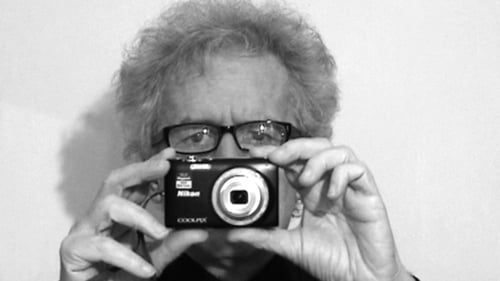
N°44
Cinématon is a 156-hour long experimental film by French director Gérard Courant. It was the longest film ever released until 2011. Composed over 36 years from 1978 until 2006, it consists of a series of over 2,821 silent vignettes (cinématons), each 3 minutes and 25 seconds long, of various celebrities, artists, journalists and friends of the director, each doing whatever they want for the allotted time. Subjects of the film include directors Barbet Schroeder, Nagisa Oshima, Volker Schlöndorff, Ken Loach, Benjamin Cuq, Youssef Chahine, Wim Wenders, Joseph Losey, Jean-Luc Godard, Samuel Fuller and Terry Gilliam, chess grandmaster Joël Lautier, and actors Roberto Benigni, Stéphane Audran, Julie Delpy and Lesley Chatterley. Gilliam is featured eating a 100-franc note, while Fuller smokes a cigar. Courant's favourite subject was a 7-month-old baby. The film was screened in its then-entirety in Avignon in November 2009 and was screened in Redondo Beach, CA on April 9, 2010.

Himself
This is the sound recording of the interview that Michael Snow, filmmaker, sculptor, photographer and visual artist, gave to Gérard Courant for the magazine Art press, published in February 1979, in its number 25. A great connoisseur of the Canadian artist's work and one of the first to pay tribute to him in 1973 in the magazine Zoom, Noël Simsolo accompanied the two filmmakers at the beginning of the discussion.

Wilma Schoen
Grand Opera marks a stock-taking of Benning's work and his life, presenting a personal and artistic autobiography woven together with a series of events dealing with the historical development of the number pi, Benning's travels, and homages to Michael Snow, Hollis Frampton, George Landow (Owen Land), and Yvonne Rainer.

Director
A continuous zoom traverses the space of a breakfast table, serving as a grand metaphor for indigestion.
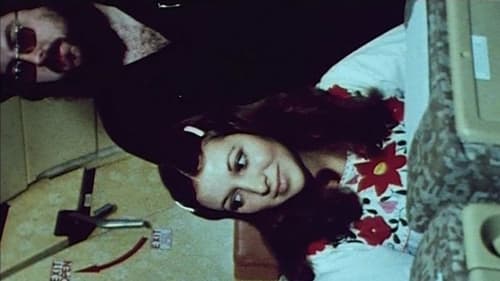
Described (rather cheekily) by director Michael Snow as a musical comedy, this deft probing of sound/image relationships is one of his wittiest, most entertaining and philosophically stimulating films. In his words, the film “derives its form and the nature of its possible effects from its being built from the inside, as it were, with the actual units of such a film, i.e. the frame and the recorded syllable. Thus its ‘dramatic’ element derives not only from a representation of what may involve us generally in life but from considerations of the nature of recorded speech in relation to moving light-images of people.’”

Director
Described (rather cheekily) by director Michael Snow as a musical comedy, this deft probing of sound/image relationships is one of his wittiest, most entertaining and philosophically stimulating films. In his words, the film “derives its form and the nature of its possible effects from its being built from the inside, as it were, with the actual units of such a film, i.e. the frame and the recorded syllable. Thus its ‘dramatic’ element derives not only from a representation of what may involve us generally in life but from considerations of the nature of recorded speech in relation to moving light-images of people.’”

Director
Two 16mm films are projected in a loop on a thin painted aluminum screen hanging in the middle of a room. We can hear the projectors at each end of the room, which project images on the central screen. We can see the same scene on each side of the screen: a woman, seen from the front and front back depending on the side of the screen, painting it with spray paint. A man then tears up the screen and goes through it, followed by the woman. We can see Michael Snow sitting further away, giving instructions to the woman. We can also see the cameras filming the scene from each side. Visitors in the room can walk around the screen and thus watch the scene from one angle or another. Both films are projected in synchronicity on the two sides of the screen.

Narrator
In which the off-screen voice of Michael Snow narrates a series of Frampton's photographs (speaking as Frampton, in the first person)—as each picture catches fire on a hot plate.

Sound Designer
A 1971 experimental Canadian film directed by Michael Snow. Shot in the Canadian mountains over a period of 24 hours using a robotic arm.

Editor
A 1971 experimental Canadian film directed by Michael Snow. Shot in the Canadian mountains over a period of 24 hours using a robotic arm.

Producer
A 1971 experimental Canadian film directed by Michael Snow. Shot in the Canadian mountains over a period of 24 hours using a robotic arm.

Director
A 1971 experimental Canadian film directed by Michael Snow. Shot in the Canadian mountains over a period of 24 hours using a robotic arm.

Aristotle
"The question is, it is either going to be a stoned age or a new Stone Age" - Louis Brigante

Director
Watch slides of Michael Snow's paintings from the worst seat in the house.

Director
Michael Snow's 1970 film A Casing Shelved combines a projection of a 35mm slide showing a bookcase in Snow's studio with a tape-recorded narration by the artist that discusses various objects within the image. Not only addressing viewers directly, Snow's narration attempts to direct our eyes toward specific portions of the image, as if spectatorial vision could function in a manner analogous to camera vision.
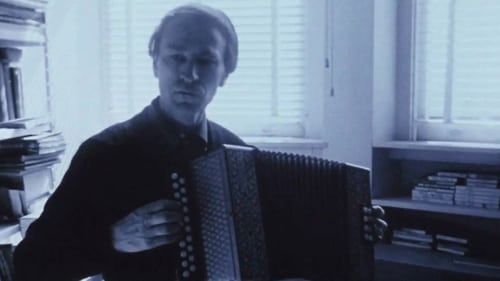
Self
An epic portrait of the New York avant-garde art scene of the 60s.

Director
A film built solely of durations. Silent succession of black and white photographs reflecting nearly empty streets from the city of Montreal. According to Michael Snow, the project began with a request from the Montreal's city council in order to place some sculptures in public spaces. The photographs in the film are the same that he took to plan their installation.
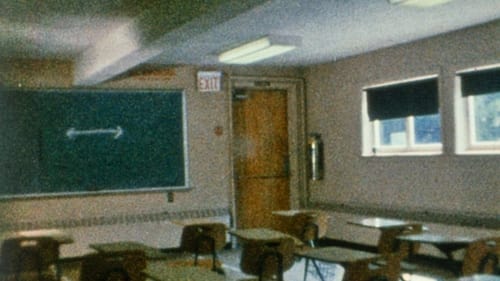
Director
A camera moves back and forth at an increasing pace. Back and forth, back and forth...

An unreleased diary film shot during the Fairleigh-Dickinson Artist Seminar simultaneous to the production of Back and Forth by Michael Snow.

Director
You see nothing but a white, crystal white plate, and water dripping into the plate, and you hear the sound of the water dripping. The film is ten minutes long.

"Homage to Michael Snow's environmental sculpture 'Blind.' The film proposes analogies, in imitation of three historic montage styles, for three perceptual modes mimed by that work." -HF

Director
Experimental short where a camera turns over into a small apartment with a woman and a cat.

Editor
Filme experimental em um único plano, feito em um grande cômodo urbano.

Director of Photography
Filme experimental em um único plano, feito em um grande cômodo urbano.

Producer
Filme experimental em um único plano, feito em um grande cômodo urbano.

Writer
Filme experimental em um único plano, feito em um grande cômodo urbano.

Director
Filme experimental em um único plano, feito em um grande cômodo urbano.

Director
First shown on January 30, 1967, FOR LIFE AGAINST THE WAR was an open-call, collective statement from American independent filmmakers disparate in style and sensibility but united by their opposition to the Vietnam War. Part of the protest festival Week of the Angry Arts, the epic compilation film incorporated minute-long segments which were sent from many corners of the country, spliced together and projected. The original presentation of the works was more of an open forum with no curation or selection, and in 2000 Anthology Film Archives preserved a print featuring around 40 films from over 60 submissions.

"The whole film are non-art portraits of people in which they do what they want with this hat – and therefore, act or stand in front of my camera. It’s only love: therefore it can’t harm you". Joyce Wieland.

In this "fourteen-part drill for the camera," Frampton created a portrait gallery of his art-world friends engaging in a variety of ordinary activities.

"Vanity. Had a beard. Appearance (looks). Looking. Disappearance act. Hand-made fades and zooms but camera made shave. Camerazor. Handsome. Tired. Walking Woman. My worst film."

Director
"Vanity. Had a beard. Appearance (looks). Looking. Disappearance act. Hand-made fades and zooms but camera made shave. Camerazor. Handsome. Tired. Walking Woman. My worst film."

Director
A cutout of a woman's silhouette is displayed in many locations while a free jazz soundtrack is heard. The jazz musicians will pose later for the camera in a studio.

Himself
Toronto is regarded as the third largest jazz centre in North America. This film features a cross-section of jazz bands of that city: the Lenny Breau Trio, the Don Thompson Quintet and the Alf Jones Quartet. Their styles show creative self-expression, hard work, and improvisation.

Director
A cross-hatched family fantasy about nocturnal furniture love. Two chairs fuck.

Director
Little Walk (1964)is Michael Snow’s first gallery film installation. It arrives as a diplomatic envoy from New York’s art and film worlds of the sixties – an alternative cinema informed by Minimalism and Happenings, materializations of art as experience projected on Snow’s trademark Walking Woman.
















